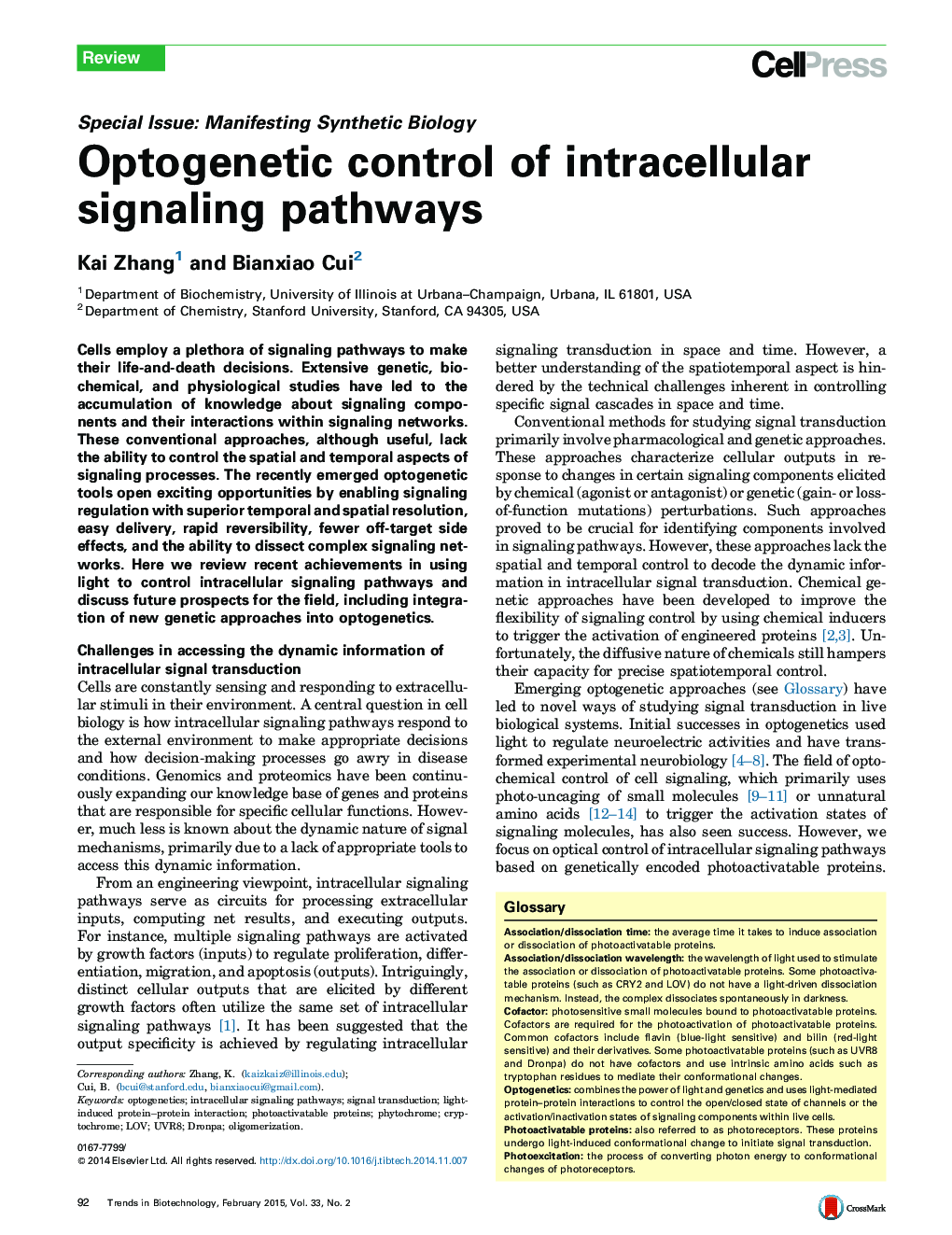| Article ID | Journal | Published Year | Pages | File Type |
|---|---|---|---|---|
| 36907 | Trends in Biotechnology | 2015 | 9 Pages |
•We explain mechanisms of light-induced conformational change of photoactivatable proteins.•We describe strategies and studies of using photoactivatable proteins to control intracellular signaling pathways.•We highlight the advantages of using light to control intracellular signaling pathways with superior spatial and temporal resolution.•We discuss precautions to be used in designing experimental schemes of optogenetic control of cell signaling.
Cells employ a plethora of signaling pathways to make their life-and-death decisions. Extensive genetic, biochemical, and physiological studies have led to the accumulation of knowledge about signaling components and their interactions within signaling networks. These conventional approaches, although useful, lack the ability to control the spatial and temporal aspects of signaling processes. The recently emerged optogenetic tools open exciting opportunities by enabling signaling regulation with superior temporal and spatial resolution, easy delivery, rapid reversibility, fewer off-target side effects, and the ability to dissect complex signaling networks. Here we review recent achievements in using light to control intracellular signaling pathways and discuss future prospects for the field, including integration of new genetic approaches into optogenetics.
